Globally, agricultural water shortage are becoming increasingly severe. Climate change and population growth have led to water resource shortages, which have become a key factor limiting agricultural development. According to the United Nations' 2023 World Water Development Report, approximately 2 billion people worldwide face drinking water security issues, with agricultural water use accounting for 70% of global water extraction. In response to this challenge, the advent of agricultural water retaining agents has not only effectively improved soil moisture utilization efficiency but also reduced water waste, playing a crucial role in the sustainable development of agriculture.
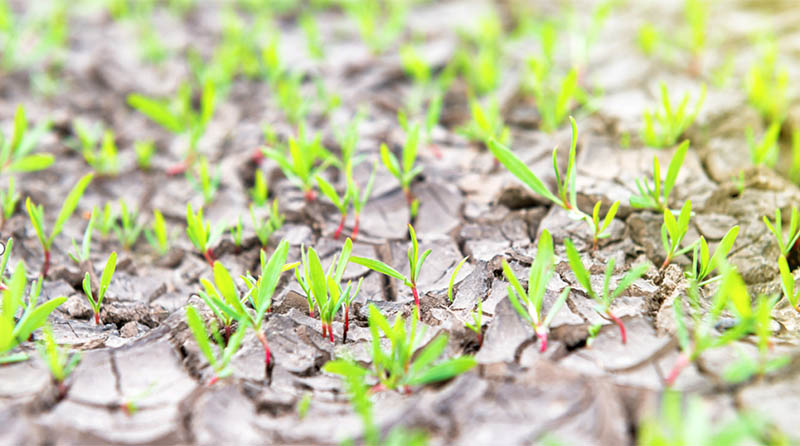
The origin of agricultural water retention agent can be traced back to the 1960s in the United States, where scientists began to recognize the importance of soil moisture management in improving crop yields and protecting soil health. Initially, natural materials such as wood chips, straw, and bark were used, which improved soil moisture conditions through their water absorption and retention abilities. However, these materials were limited in addressing water resource shortages and could not meet the demands of large-scale agricultural production.
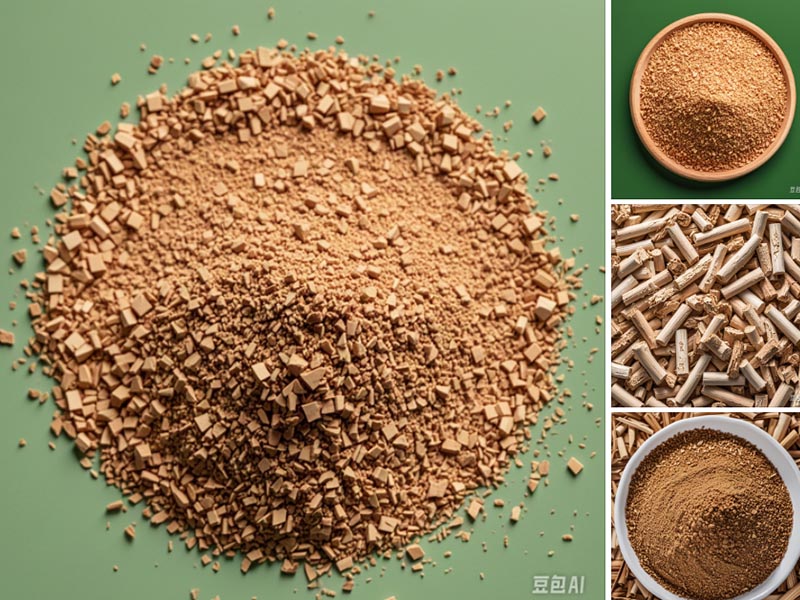
With advances in materials science and chemical engineering, synthetic polymer materials such as sodium polyacrylate (PAA) and polyacrylamide (PAM) began to be widely used in the preparation of agricultural water retaining agents after the 1980s. These new materials not only had superior water retention performance but could also be customized according to different soil and crop needs, significantly enhancing the applicability and effectiveness of water retaining agents in agricultural production.
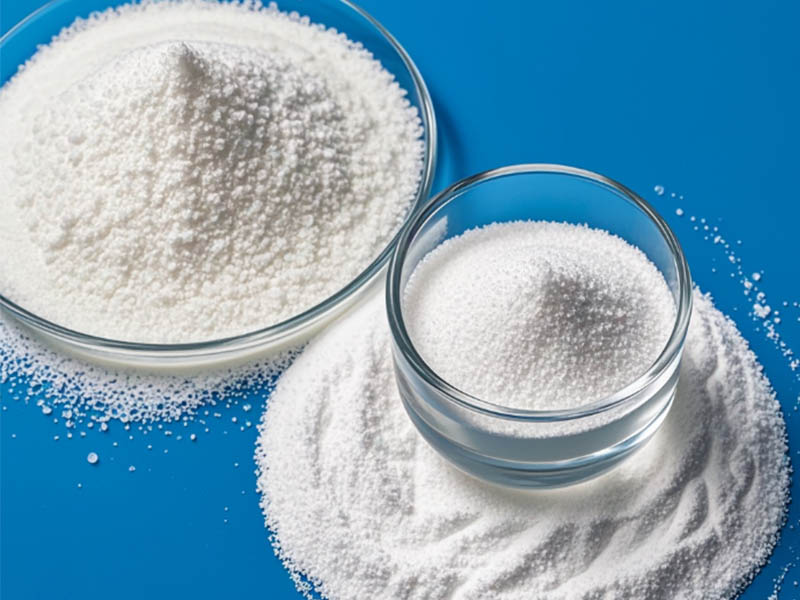
From the 1990s to the 21st century, the types and performance of water retaining agents have been further enhanced. Researchers have started focusing on the biodegradability and environmental friendliness of water retaining agents, developing new types such as sodium-based and potassium-based superabsorbent polymers (SAP). These agents not only have strong water absorption and retention capabilities but can also form stable gel structures in the soil, helping to improve soil structure and enhance the growth environment for crops. Furthermore, the application fields of water retaining agents have gradually expanded from agriculture to forestry and horticulture, providing support for broader environmental protection and ecological construction.
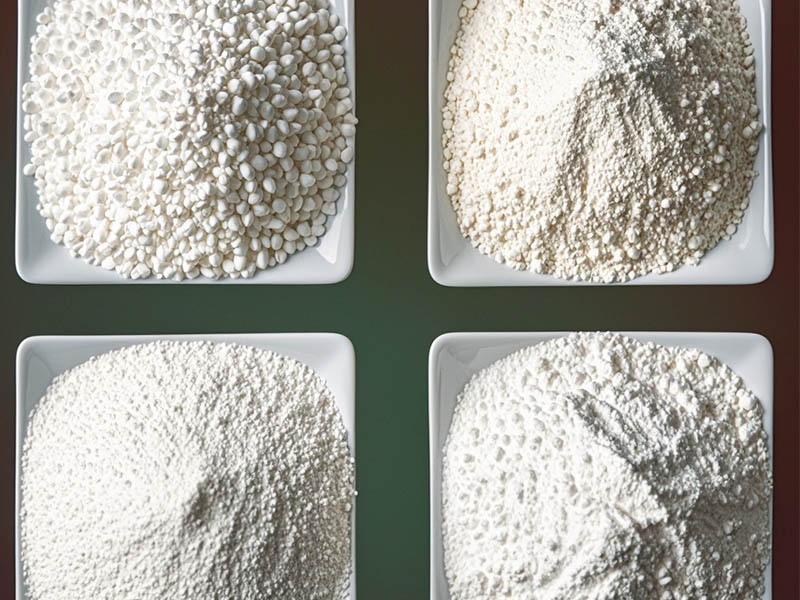
Additionally, modified water retaining agents based on natural polymers, such as modified starch and cellulose, have gained attention. These agents aim to improve water retention and biodegradability while developing multifunctional properties like slow-release fertilizers and soil improvement.
However, not all agricultural water retaining agents can meet the demands of modern agriculture. Differences in cost, environmental impact, and water and nutrient retention effects complicate the selection process. The major water retaining agents on the market face various challenges:
| Type | Principle | Advantages | Disadvantages |
| Natural Polymers | Utilize natural polymers to absorb and retain water | -Environmentally friendly | -Lower water absorption |
| -Biodegradable | -Higher cost | ||
| Inorganic Water Retaining Agents | Use natural minerals to absorb and retain water | -Low cost | -Lower water absorption |
| -Improve soil aeration | -Heavy, inconvenient for large-scale use | ||
| Vermiculite | Water-absorbing mineral, retains water within structure | -Improve soil structure | -Limited water absorption |
| -Low cost | -Inconvenient | ||
| Bentonite | Water-absorbing mineral, forms an expansion layer | -Low cost | -Average water absorption |
| -Improve soil structure | -Inconvenient | ||
| Alginate | Extracted from algae, forms a gel upon absorbing water | -Environmentally friendly | -Average water absorption |
| -Biodegradable | -Higher cost | ||
| Chitosan | Extracted from crustacean shells, absorbs water | -Environmentally friendly | -High cost |
| -Beneficial to soil and plants | -Limited water absorption | ||
| Lignin Derivatives | Extracted from wood, absorbs and retains water | -Environmentally friendly | -Average water absorption |
| -Improve soil structure | -Higher cost | ||
| Polyacrylamide (PAM) | Improves soil structure, enhances water retention | -Strong water absorption | -Contains carcinogenic elements |
| -Reduces soil erosion | -Can cause soil compaction and affect soil microbial activity | ||
| Superabsorbent Polymers (SAP) | High water absorption, forms a gel upon absorbing water | -Strong water absorption | -High cost |
| -Suitable for various crops | -Long-term use may affect soil structure | ||
| -Some nutrient retention ability | |||
| Humic Acid | Extracted from natural organic matter, absorbs and retains water | -Enhances soil fertility | -Average water absorption |
| -Higher cost | |||
| Organic Water Retaining Agents | Use organic substances to absorb and retain water | -Enhances soil fertility | -Limited water absorption |
| -Environmentally friendly | -Higher cost | ||
| Organic-Inorganic Composite Agents | Combine organic and inorganic materials to absorb and retain water | -Strong water retention | -High cost |
| -Enhances soil fertility and structure | -Complex to use | ||
| Composite Water Retaining Agents | Combine the advantages of organic and inorganic materials to absorb and retain water | -Superior water retention | -Higher cost |
| -Effective soil improvement | -Complex to use | ||
| Biopolymer Water Retaining Agents | Use degradable biopolymers to absorb and retain water | -Environmentally friendly | -High cost |
| -Biodegradable | -Average water absorption |
For the current development of agricultural water retaining agents, water holding capacity, fertilizer retention, cost saving, and environmental friendliness are four key factors that are interdependent. In terms of development potential, polymer-based and organic water retaining agents show the most promise. From an environmental perspective, organic and biological water retaining agents address this problem and with fertilizing effects as well. However, their inherent principle of using organic substances to absorb water limits their water absorption capacity, and high costs are a challenge. Polymer-based water retaining agents are excellent in water retention and soil improvement, but as chemical formula, it may impact the soil. Addressing the issue of degradability is crucial.
Regarding which, SOCO New Materials Co., Ltd. has proposed its own solutions:
"To address environmental issues, our products have passed degradability tests, heavy metal-free tests, and oral toxicity tests, and we have developed soil water retaining agents containing biobased elements. Additionally, considering the characteristics of different crops, we have developed products such as potassium polyacrylate and ammonium polyacrylate containing trace elements for plant growth, better serving crop growth cycles and special soil products for saline-alkali land," said Jack, SOCO's R&D Director.
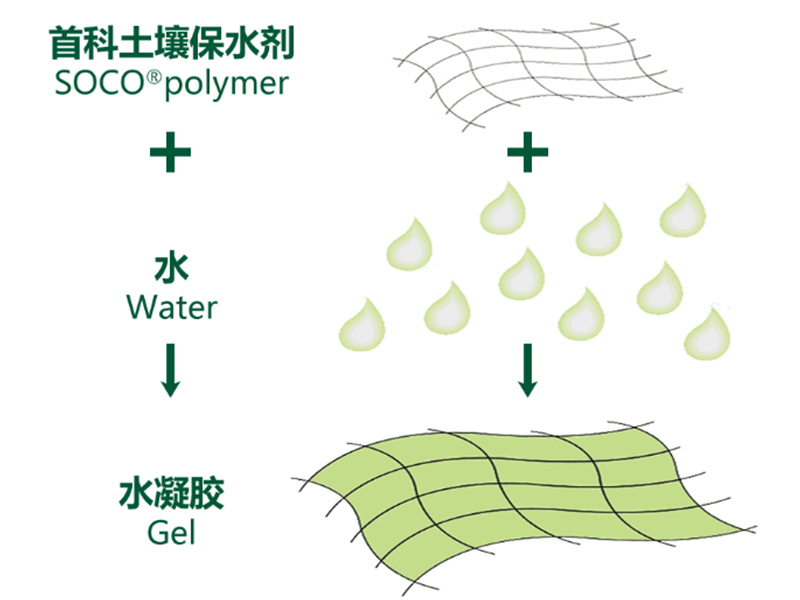
"SOCO ® soil water retaining agents are super absorbent polymer, a class of crosslinked copolymers containing hydrophilic groups and crosslinked structures. They can absorb up to 200-900 times their own weight of distilled water, forming a gel after absorbing water. The polymer consists of a set of parallel polymer chains, regularly interconnected by a crosslinking agent, forming a network. When water contacts one of the links, it is absorbed into the molecule through osmosis. Water quickly enters the interior of the polymer network and is stored there. When the soil dries out, the polymer releases 95% of the absorbed water into the soil. At the same time, during the water absorption and release process, it also improves clay and loam soil."
Strong Polymer, Trusted Solution, SOCO's water retaining agents are now widely used in over 100 countries and regions, helping more than 120,000 farmers improve agricultural productivity and save a significant amount of water resources. Through various methods such as mechanized application, dry application, and wet application, and based on different crop and soil conditions, the professional technical team recommends suitable application methods and dosages. Through a series of field trials and customer feedback, SOCO's water retaining agents have demonstrated excellent results in improving crop growth, increasing yields, and reducing water and fertilizer usage.
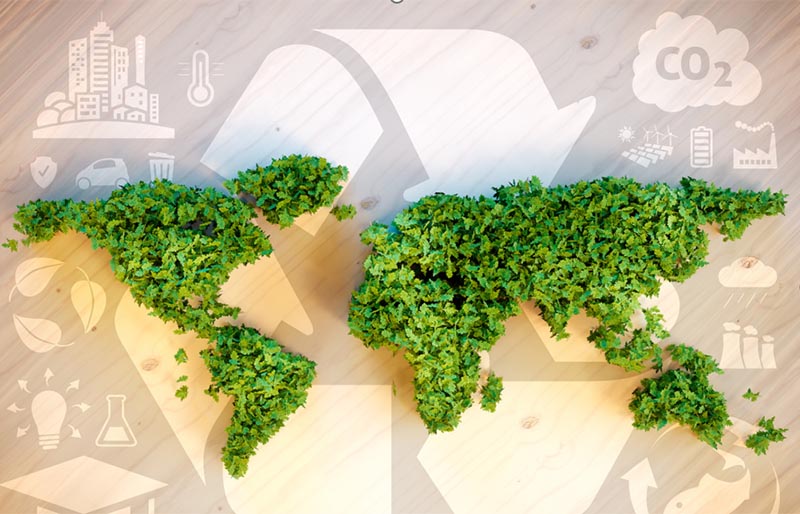
We believe that through continuous technological innovation and product optimization, agricultural water retaining agents will continue to develop, helping achieve efficient water resource utilization in agriculture, making greater contributions to global sustainable agricultural development, and jointly creating a green and efficient future.